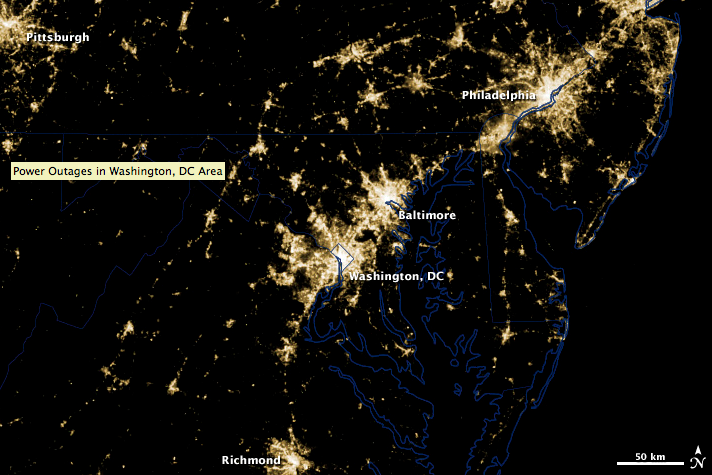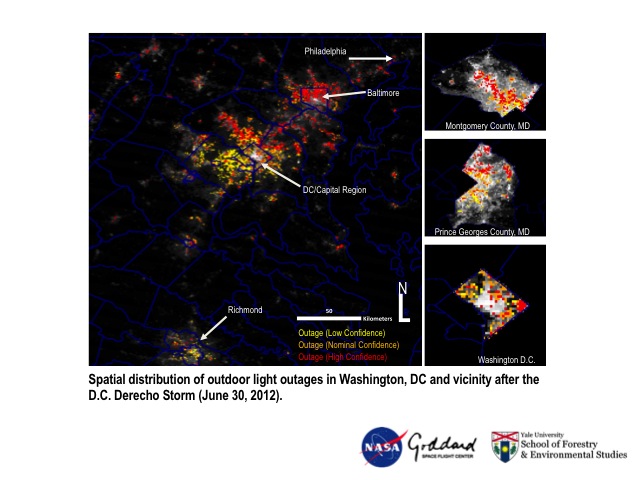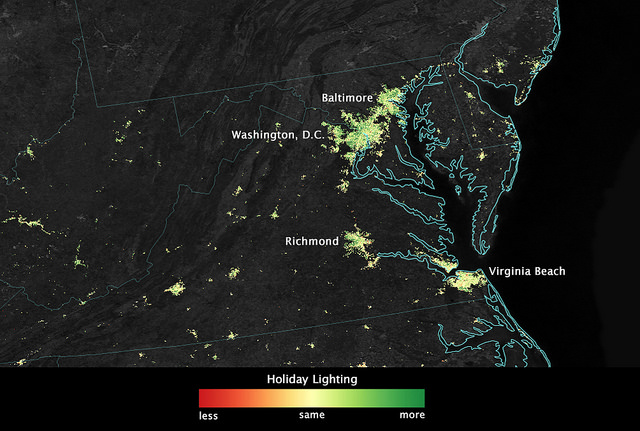Saying Goodbye To The Kojo Nnamdi Show
On this last episode, we look back on 23 years of joyous, difficult and always informative conversation.

An image from the NASA-NOAA Suomi NPP satellite show the power outages over Washington, D.C. and Baltimore that occurred as a result of the derecho on Friday, June 29, 2012.
Two years ago, images from the newly launched NASA-NOAA Suomi NPP satellite wowed the world with a first-ever look at Earth’s lights at night. Today scientists are using Suomi’s sensors to zoom in on urban areas, investigating how we light our cities and what energy use tells us about our behavioral, cultural, and socio-economic patterns. We find out what scientists are learning about the D.C. metro area from our night lightscape, and how this data could be used to aid cities in making decisions — from energy use to emergency response — amid a changing climate.
NASA used a Visible Infrared Imaging Radiometer Suite (VIIRS) sensor onboard the NASA-NOAA Suomi NPP satellite to create images of power outages after the 2012 derecho, a destructive complex of thunderstorms that left more than 1 million area residents without power.

City lights shine brighter during the holidays in the United States when compared with the rest of the year, as shown using a new analysis of daily data from the NASA-NOAA Suomi NPP satellite.

A cloud-free view of the Earth from space as acquired by the Suomi National Polar-orbiting Partnership Satellite (Suomi NPP). It’s a composite of data acquired over nine days in April and 13 days in October 2012. It took 312 satellite orbits and 2.5 terabytes of data to get a clear shot of every parcel of land surface.
Thanks to the VIIRS instrument on the Suomi NPP satellite, a joint mission between NASA and NOAA, scientists are presenting a new way of studying satellite data that can illustrate patterns in holiday lights, both during Christmas and the Holy Month of Ramadan.
On this last episode, we look back on 23 years of joyous, difficult and always informative conversation.
Kojo talks with author Briana Thomas about her book “Black Broadway In Washington D.C.,” and the District’s rich Black history.
Poet, essayist and editor Kevin Young is the second director of the Smithsonian's National Museum of African American History and Culture. He joins Kojo to talk about his vision for the museum and how it can help us make sense of this moment in history.
Ms. Woodruff joins us to talk about her successful career in broadcasting, how the field of journalism has changed over the decades and why she chose to make D.C. home.